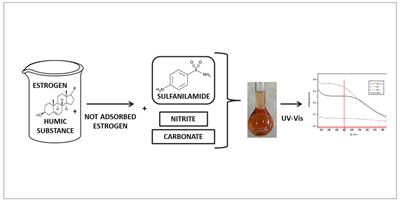Development and Validation of a Spectrophotometric Method in the UV-Vis Region to Evaluate the Interactions of Estrogens with Humic Substances in an Aqueous Environment

- Endocrine disruptors,
- Estrogens,
- Humic substances
Copyright (c) 2021 Orbital: The Electronic Journal of Chemistry

This work is licensed under a Creative Commons Attribution-NonCommercial-NoDerivatives 4.0 International License.
Abstract
Natural and synthetic sex hormones are potent endocrine disruptors (EDs) that have been detected in aquatic environments on all continents. Studies show that humic substances (HS) are the main compounds capable of interacting with hormones, interfering in the bioavailability processes. In the present work, a methodology based on the colorimetric properties of the azo-compounds was developed and validated using diazotized sulfanilamide as a reagent to study the interactions with HS of estrogens: estrone (E1), 17β-estradiol (E2) and 17α-ethinylestradiol (EE2). As an alternative method to quantify hormones during interactions, ultraviolet-visible molecular absorption spectroscopy was employed. An analytical curve was constructed for concentrations ranging from 10.0 to 28.0 μg mL-1. The results were compatible with chromatography, also applied in this work. For the study of the interaction, samples of the hormone standard and HS solution were used under constant agitation. The reduction in the concentration of estrogens has been detected since the beginning of the process, with EE2 being the best result. In the aliquot removed from the system after 48 hours of agitation, 51.1% EE2 was removed in the presence of 10.0 μg mL-1 of the HS and 75.8% at 20 μg mL-1. Simulations can predict the behavior of hormones in natural aquatic environments rich in HS.
